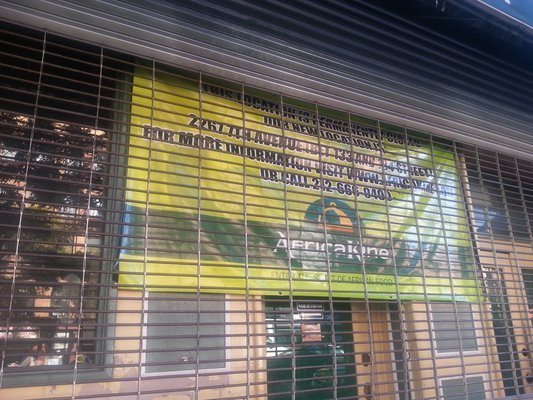

We selected a beautifully decorated establishment, Africa Kine, a few steps from the 8th Avenue subway on a street that, if not yet gentrified, felt warm and safe. The Senegalese community is particularly vibrant along 116th Street and Frederick Douglass Avenue. Harlem is the residence of choice for many immigrant Francophone Africans. Anglophone Africa is located in University Heights in the Bronx (Little Accra) and Fort Greene in Brooklyn.
AFRICA KINE FULL
Hanging with an Africanist of my acquaintance, a woman who has spent much quality time in Accra, where she consults with museums and historical sites, we decided to dine under a full West African moon. “So when you walk through this area here, you’re walking in the steps of many great civil rights leaders.Post #1 - October 17th, 2005, 10:05 pm Post #1 - October 17th, 2005, 10:05 pm “That corner right there, on 115th street where the housing project exists, where I was born and raised, is one of the corners where he’d minister to the people and he would offer what he felt was the diagnosis to many of the social problems of the area.

“Malcolm X’s presence is everywhere in this area,” he adds, as he walks through the neighborhood. “As you walk through this area here, it’s like taking a cultural bath,” says Shoemaker, who’s been leading tours through Little Senegal for over a decade Neal Shoemaker, the energetic president of the Harlem Heritage Tours and Cultural Center, says that some of the most famous African American activists calling for civil rights in the mid-1950s and 1960s were active in the area. Read: African slave traditions live on in U.S.Īlthough called Little Senegal, landmarks with great historical significance for native Africans and African Americans stretch along the Harlem neighborhood. “Harlem is a very special and unique community and it always reminds me of Africa and I feel the most at home here. “And that’s how I come up with some of the great dishes here,” he adds. “I look at Africa as a great source of information and inspiration,” says Samuelson. Samuelson, known for introducing African spices to Western dishes, is using the continent’s culinary traditions to expose Africa to a wider audience. Not far from Africa Kine, at the Red Rooster restaurant, chef Marcus Samuelson is busy checking orders. “Most of the time they say ‘it reminds me of Senegal, it reminds me of my family,’” she explains. Waitress Maritou Djigal says that “thiebou dienn,” Senegal’s national dish made of Jolof rice with fish, is the meal of choice in the Harlem eatery.Įl Hadji Fey, VP, Senegalese Association of America Others come here looking for fellow countrymen who can make their new city feel less strange. That’s why a lot of people call here Little Senegal because we started making the community grow, we started making people grow.”Īlong this stretch of blocks, the taste of Senegal is everywhere – from the tantalizing scents of fish and rice stews emanating from the traditional restaurants dotting the neighborhood, through to the lively Malcolm Shabazz Market, where stall vendors hawk their wares, to the numerous Senegalese-named clothes and haircare shops.Īt “Africa Kine,” which was one of the first Senegalese restaurants to open in Harlem, some two decades ago, homesick customers find comfort in flavors conjuring up memories of home.

We’re the ones who really made Harlem grow up. “We were scared in the beginning – you know how Harlem was 20, 30 years ago.

We bought a lot of stores here, a lot of Senegalese businesses right here. “When we got here, all the stores you see over here, it was absolutely nothing. “We’re the ones who built Harlem,” says El Hadji Fey, vice president of the Senegalese Association of America. Known as Little Senegal, or Le Petit Senegal, the strip of blocks around West 116th Street is packed with inviting restaurants and colorful shops, powerful reminders of life back in the homeland. Read: African flavor at the heart of Paris


 0 kommentar(er)
0 kommentar(er)
